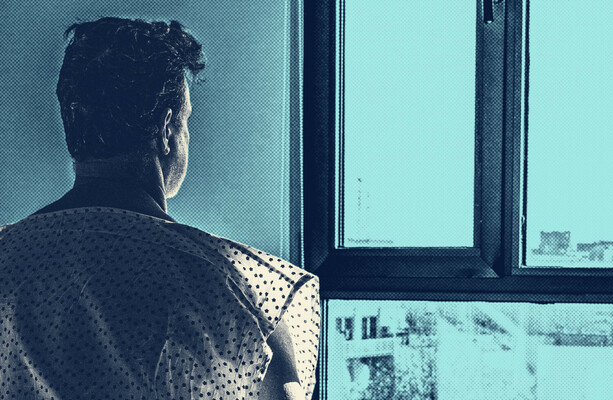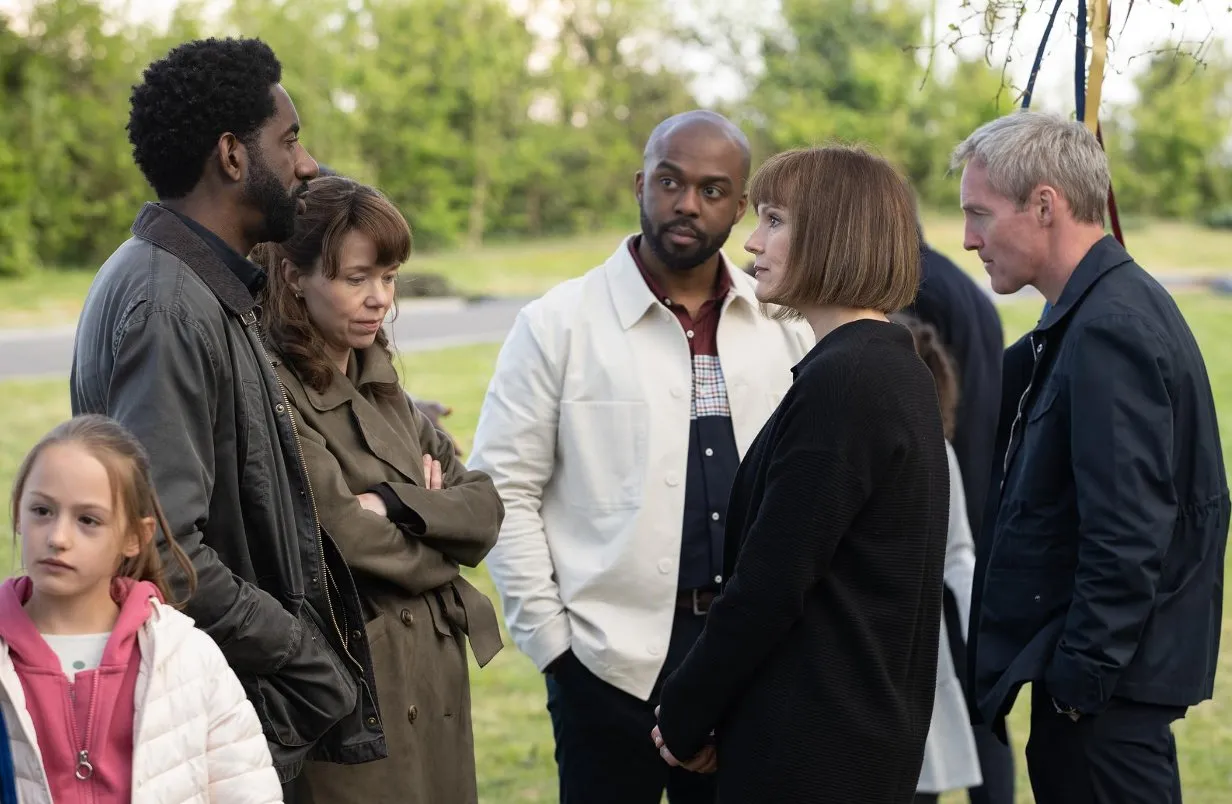Copyright thejournal

We need your help now Support from readers like you keeps The Journal open. You are visiting us because we have something you value. Independent, unbiased news that tells the truth. Advertising revenue goes some way to support our mission, but this year it has not been enough. If you've seen value in our reporting, please contribute what you can, so we can continue to produce accurate and meaningful journalism. For everyone who needs it. One-off amount I already contribute Sign in. It’s quick, free and it’s up to you. An account is an optional way to support the work we do. Find out more. Investigates Investigates Money Diaries The Journal TV Climate Crisis Cost of Living Road Safety Newsletters Temperature Check Inside the Newsroom The Journal Investigates Daft.ie Property Allianz Home The 42 Sport TG4 Entertainment The Explainer A deep dive into one big news story Sport meets news, current affairs, society & pop culture have your say Or create a free account to join the discussion Advertisement More Stories InvestigatesHistoric psychiatric institutions ‘They have been sidelined’ - historic trauma at Ireland's mental institutions The Journal Investigates hears allegations of historic neglect, forced labour and isolation in Ireland’s shuttered state-run asylums from the 1950s to the early 2000s. 3.56pm, 24 Oct 2025 Share options FORMER PATIENTS OF PSYCHIATRIC asylums and their families are calling for an inquiry and redress over the abuse that is alleged to have occurred in Irish institutions from the 1950s up until the early 2000s, including medical treatments that are viewed as questionable today. Mary Donovan, whose mother, Margaret Mary, spent decades detained in various facilities, told The Journal Investigates: “Give them the apology and compensation that they deserve. Because once you [went] in those doors to those institutions, you [didn’t] come out the same.” Mary said her mother was once strapped to a chair and left there for an extended period, something Mary described as “absolutely inhumane”. Survivor David Sugrue, now aged 67, described the terror he says he felt as a 14-year-old boy detained in an adult psychiatric ward. And Mary Smith, whose brother, Christopher, spent the majority of his life in psychiatric asylums, told us of his physical deterioration, from being “a big man … to a skeleton”. By the late 1950s, there were more than 20 district “mental” hospitals with more than 20,000 patients in Ireland and the number of psychiatric beds per head of population were thought to be the highest in the world. Yet even after the number of beds declined, serious issues persisted. Brendan Kelly, professor of psychiatry at Trinity College Dublin, told The Journal Investigates: “Mass institutionalisation declined over the 1970s and 1980s, but in-patient psychiatry facilities remained very suboptimal. “So, it is entirely possible that people had negative experiences during those decades, unfortunately, but systematic institutionalisation declined. There still remained challenges with rehabilitating long-stay patients into the community.” He said many people with behavioural problems or a severe disability found themselves detained in these facilities. Kelly added: The only option presented to families, ultimately, was institutionalisation. “Very often you find in the clinical notes in these hospitals, doctors and nurses writing, ‘this person does not need to be here, but there is nowhere else for them to go,’ and that was often noted on admission to these facilities, not just after a while.” Investigations like this don’t happen without your support… Impactful investigative reporting is powered by people like you. Support The Journal Investigates “What wrong did a 16-year-old girl deserve to be locked away in an asylum?” Margaret Mary Donovan was institutionalised for nearly her entire life. She spent over 50 years in both state-run and religious institutions across Ireland. Her daughter, Mary, told us: “I’m not over what they did to a beautiful soul like her. She didn’t deserve it.” Margaret Mary’s first experience of institutionalisation was at age 16 when she was sent to an industrial school in 1955 on the grounds of “false pretence with intent to defraud”. “What wrong did a 16-year-old girl deserve to be locked away in an asylum?” Mary said. The Journal / YouTube Shortly after she was brought to an out-patient clinic, where a doctor noted her as having no delusions but wrote that she was “fidgeting and nervous, keeps forgetting.” Margaret Mary was then sent to a psychiatric hospital. According to documents seen by The Journal Investigates from that institution, Margaret Mary was admitted in April 1956 and was discharged in August that year. Just six months later, in February 1957, she gave birth to a baby in a Bessborough Mother and Baby Home. In hand-written psychiatric notes from a different hospital, dating from 1969 and seen by The Journal Investigates, it was recorded that Margaret Mary said she had been “physically assaulted many times, always by men”. In 1966, nursing notes said: “There appears to be very little wrong mentally with her.” By 1972, a psychiatrist wrote that Margaret Mary was having “delusions” of a “sexual assault by a friend of her husband”. Margaret Mary also received dozens of electroconvulsive therapies (ECT) throughout her time at one institution, and allegedly six times during one week. Mary is concerned as to whether a properly informed consent was given by her mother for the ECT, as the signatures appear different on different forms. A family photo of Margaret Mary It was also noted in documents in 1958 that Margaret Mary received insulin shock therapy – a treatment that has since been discontinued and discredited due to safety concerns. Advertisement After obtaining hundreds of pages of documents from her mother’s time in institutions, one incident that “traumatised” Mary related to an episode when Margaret Mary had been pulling out her hair, and as a form of treatment, she was strapped to a chair for an extended period. “She couldn’t get out of it,” Mary said. Mary said that those who suffered should get an apology from the government and the HSE, as well as compensation. “When she died, a big chunk of our lives went with her,” Mary said. “She suffered, and we’re still suffering. We’re still carrying that pain.” Unpaid labour while still a teenager David Sugrue said that at just two years of age, he was boarded out to an isolated household in the south of the country, enduring 12 difficult years before, at the age of 14, he ran away. He was subsequently arrested by gardaí and put under the care of the Southern Health Board. After spending time at the county home, David said he remembers being brought to a psychiatric institution, still aged just 14. David said he was placed on a bed. He recalled: I didn’t know what was happening. He said that he remembers having some of his hair cut, and something attached to his head. He said he received ECT, but his recollection is that this was without any warning, consent or medication. David said that his memory is that he was forced to work folding boxes and later on that he was sent to work at a location outside the institution. A nurses’ report from 1972 corroborates his account of folding boxes. David was not paid for any of his this work and said that he sometimes suffered physical abuse during work shifts outside the institution. David said that those who suffered should be looked after by the government. Compensation “should be given to the survivors” after what was done, he said. “You never forget it.” ‘He went from being a big man to a skeleton…’ The first time Christopher Smith’s sister, Mary, met him in 1990, she found him in a basement room in a hospital with other patients. She never knew she had any siblings until later in life and had been searching for her mother at the time. When Mary found Christopher, she was told by a member of staff that her brother had always hoped to get out but that in the last 10 years he had “gone into himself”. The Journal / YouTube Mary said that it took years for Christopher to be able to communicate with her. She said her brother had been there detained for 22 years and over that period had developed cataracts. Psychiatric case notes dating from January 1965 state that Christopher was a “temporary patient” with the assistance of a garda escort. The same year psychiatric case notes relating to Christopher said: “Does not remember coming here or why he came. Good condition, anxious for work and to leave hospital once he is well.” The following year he signed himself out of hospital but was later re-admitted, with case notes outlining how he was “a danger to himself and others”. Mary claimed that her brother was never certified while he was at the facility where he spent more than 20 years. Yet in a letter from January 2007, a Section Officer from HSE South confirmed to Mary that Christopher was a voluntary patient. He died less than one month later. One record dating from the turn of the millennium regarding Christopher referred to schizophrenia, the various medications he was on at the time and that he is “institutionalised”. It also noted a “Good level of functioning in the ward” but also “a history of inappropriate sexual behaviour”. However, Mary said of this later aspect that she never saw or heard any evidence of this from the time she came to know her brother. According to Mary: Christy never stopped asking me to get him out. Christopher was moved to another facility in the Nineties and Mary recalled her brother’s deteriorating health in his final years there. “Look at the weight loss,” Mary said, pointing to pictures she took during her visits over the years. “He went from being a big man… he was overweight… to a skeleton.” Medical notes from late in Christopher’s life suggest he had sustained “a skull fracture and traumatic brain injury in the past”, with gliosis – a reactive response to central nervous system injury or disease – also observed. The Journal Investigates is dedicated to lifting the lid on how Ireland works. Our newsletter gives you an inside look at how we do this. Sign up here... You are now signed up Recalling her last phone call with Christopher, Mary said: “He couldn’t breathe.” She consoled her brother and told him that she was trying everything she could to have him discharged. The next day, Mary received a call that he was dead. Christopher Smith with his sister, Mary “You have one life, and Christy was all that I had in the world, and they took him,” Mary told The Journal Investigates. HSE: ‘Nobody should ever experience harm’ HSE South West oversaw the psychiatric institutions mentioned in this article. A spokesperson said it “acknowledges the seriousness of the testimonies shared and the profound impact these experiences may have had on individuals, families, and communities. “While we are unable to comment on individual cases out of respect for the confidentiality of those involved, we want to express our sincere regret for any negative patient experience. Nobody should ever experience harm while accessing healthcare”. It also said that over the past few decades, mental health services across Ireland had “undergone significant transformation”, with the care now having a “strong emphasis on recovery, dignity and respect.” The Department of Health told The Journal Investigates that since 2001, the Mental Health Act has provided “safeguards” for those subjected to involuntary detention and also led to the establishment of the Mental Health Commission. But according to Sinn Fein’s Spokesperson for Mental Health, Sorca Clarke: There’s a responsibility on the state to continue to look and to see how many more people have been affected by this. “The government has often framed [this] as being bad actors within certain institutions, when really what it was was state failures – that the structural systems in place allowed to happen and allowed to continue. They facilitated its continuance.” Terri Harrison, an advocate for church and state institution survivors who worked to get redress for the survivors of Mother and Baby Homes, said: “It took 24 years for acknowledgement and for [the government] to express genuine sincerity. “My only advice [to the survivors] is for them to understand that what they do, they do for themselves, and no matter what the outcome is, they did their best. “I can’t imagine what it must have been like in psychiatric institutions because who is speaking for these people? They lose their voice. They won’t be entertained because of the stigma to do with mental health issues. We are labelled and boxed in this country, as we always will be.” Clarke noted that when the survivors of the Mother and Baby Homes and school abuse began to come forward, they were in small numbers too. She urged others who have had similar experiences to David and the family members of Mary Smith and Mary Donovan to speak publicly. Kelly, who wrote the book Hearing Voices: The History of Psychiatry in Ireland, pointed out that the asylums were “run entirely by the government” and that religious orders were not really involved. He said it is difficult to know how many people were affected – “but it is clear that many people had negative experiences. “These were hospitals which were in decline, often physically so: poorly maintained and often deeply unpleasant. Yes, there are people who had difficult times in these settings and this will still affect their wellbeing.” Alamy Stock Photo Alamy Stock Photo As for what should happen now, he said: “I suggest robust historical enquiry into the ‘mental hospitals’ as well as improvement to current mental health services.” Dr Louise Rooney from Mental Health Reform said of those who suffered: “They have absolutely been sidelined, but maybe now it’s their time, because everybody gets a time. Maybe it’s just the right time for people to sit up and talk about this and be taken seriously when they have been forgotten. “People who have lived to endure mental health disabilities have never been seen as credible witnesses. They’re not seen as credible. Everything that they say is questioned. But you can be sure of anything that people know what they’ve experienced.” Every person with experience of a psychiatric facility in this period who spoke to The Journal Investigates had the same request – an inquiry and redress. “With regards to people who were in psychiatrics, they need their apology. They do need to be compensated,” Mary Donovan said. “I will keep fighting, and I will keep talking about her story, because what you did to her was wrong.” The Journal Investigates Reporter: Niamh Cavanagh • Editors: Noel Baker, Maria Delaney • Video: Nicky Ryan • Social Media: Cliodhna Travers • Main Image Design: Lorcan O’Reilly Investigations like this don’t happen without your support... Impactful investigative reporting is powered by people like you. Over 5,000 readers have already supported our mission with a monthly or one-off payment. Join them here: Support The Journal Niamh Cavanagh Send Tip or Correction Embed this post To embed this post, copy the code below on your site Email “‘They have been sidelined’ - historic trauma at Ireland's mental institutions”. Recipient's Email Feedback on “‘They have been sidelined’ - historic trauma at Ireland's mental institutions”. Your Feedback Your Email (optional) Report a Comment Please select the reason for reporting this comment. Please give full details of the problem with the comment... Historic allegations Historic psychiatric institutions Investigates News in 60 seconds local democracy Government asks councils to limit media access to new policing committees evening fix Here's What Happened Today: Bank Holiday Monday A man has been arrested after he barricaded himself inside an empty creche in County Meath Oliver Plunkett Street Gardaí launch investigation into attacks on drag artists in Cork city Buenos Aires Argentina's Milei vows more reforms after election win North Strand Road Man charged with assault and public order offences after Connolly canvasser incident UN peacekeeping troops shoot down 'aggressive' Israeli unmanned drone in south Lebanon Michael D Higgins President Higgins to remain in hospital for treatment of infection North Strand Road Man charged with assault and public order offences after Connolly canvasser incident A man has been arrested after he barricaded himself inside an empty creche in County Meath New public toilets in North Dublin park vandalised after one week more from us Investigates Money Diaries The Journal TV Journal Media Advertise With Us About FactCheck Our Network FactCheck Knowledge Bank Terms & Legal Notices Terms of Use Cookies & Privacy Advertising Competition more from us TV Listings GAA Fixtures The Video Review Journal Media Advertise With Us Our Network The Journal FactCheck Knowledge Bank Terms & Legal Notices Terms of Use Cookies & Privacy Advertising Competition © 2025 Journal Media Ltd Terms of Use Cookies & Privacy Advertising Competition Switch to Desktop Switch to Mobile The Journal supports the work of the Press Council of Ireland and the Office of the Press Ombudsman, and our staff operate within the Code of Practice. You can obtain a copy of the Code, or contact the Council, at https://www.presscouncil.ie, PH: (01) 6489130, Lo-Call 1800 208 080 or email: mailto:info@presscouncil.ie Report an error, omission or problem: Your Email (optional) Create Email Alert Create an email alert based on the current article Email Address One email every morning As soon as new articles come online



